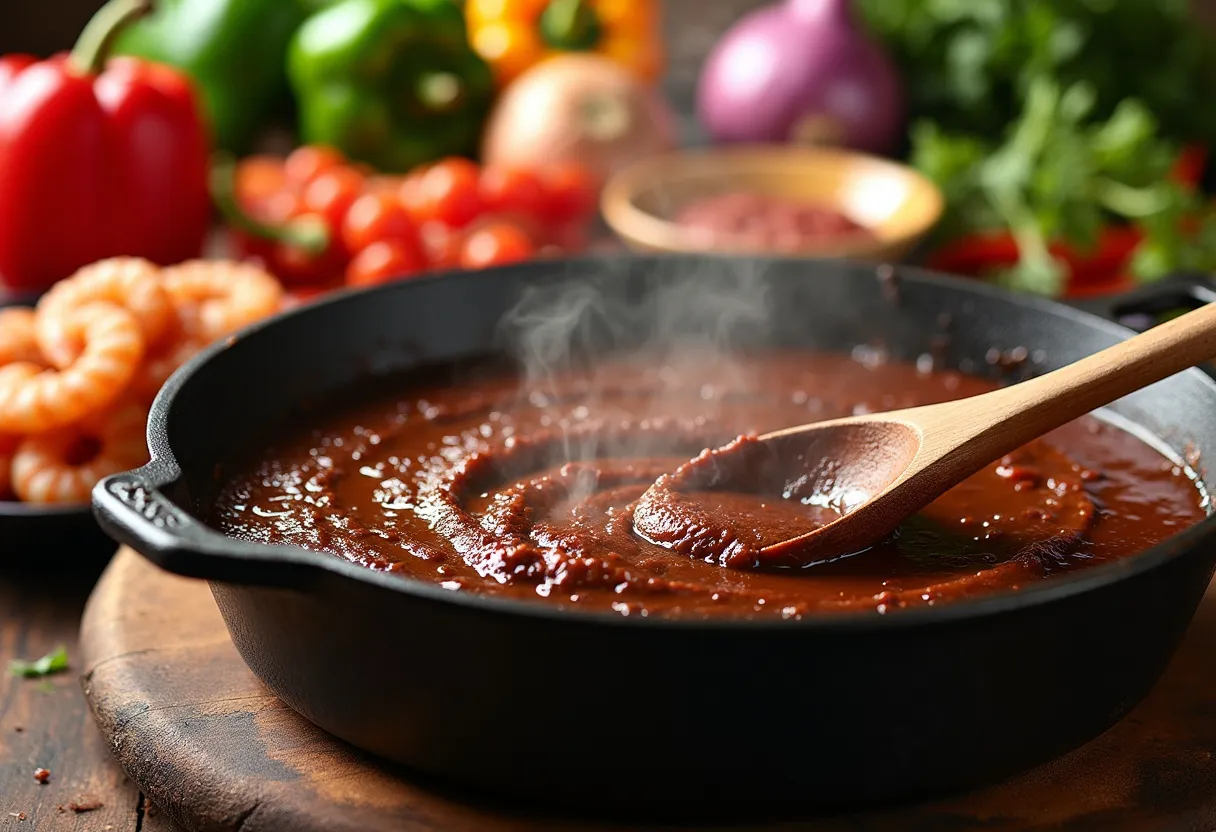
Mastering the Art of Roux: A Review and Guide to Perfecting Cajun and Creole Foundations
Published on 9/21/2024
Ethan Walker • 9/21/2024
Understanding the Essence of Roux
In the heart of Cajun and Creole cuisine lies a simple yet transformative element known as roux. Comprising just two essential ingredients, flour and oil or butter, this rich mixture is the foundation of countless Southern dishes. If you've ever savored a luscious spoonful of gumbo or enjoyed the complex flavors of etouffee, you've tasted the depth and heartiness that a well-crafted roux brings. As someone who grew up immersed in the vibrant culinary landscape of New Orleans, I can attest to the magic this versatile base imparts to any dish.
The Art and Science of Making Roux
Creating a roux is both an art and a science. The transformation of mundane flour and oil into a velvety, aromatic paste is nothing short of alchemy in the kitchen. The key to a perfect roux lies in the cooking time, which varies depending on the type of dish you're crafting. For a classic Cajun gumbo, a dark roux is essential, requiring careful attention and a longer cooking period. This cooks until it achieves a rich, nutty aroma, akin to a dark chocolate hue. Here's a handy cooking timer guide to help you nail this transformation every time.
Choosing the Right Ingredients
- Flour: Opt for all-purpose flour for its versatility and consistent texture.
- Oil: Traditionally, a neutral oil like vegetable or canola is used for its high smoke point, but you can experiment with butter for a lighter roux, keeping in mind it's more prone to burning.
Step-by-Step Guide to Roux Mastery
- Measure 1:1 ratio of flour and oil or butter.
- Heat the oil in a heavy-bottomed pot over medium heat, watching it carefully.
- Sift in the flour, stirring constantly with a wooden spoon or whisk to avoid lumps.
- Continue stirring as the mixture darkens, adjusting the heat as necessary and referring to your timer for guidance.
- Once the desired color is reached, remove from heat and incorporate into your dish.
Common Pitfalls and How to Avoid Them
Even seasoned cooks can encounter challenges when working with roux. Here are some common pitfalls along with tips to ensure success:
- Burning: Never leave a roux unattended. If it starts to burn, there's no salvaging it—start fresh to avoid bitterness in your dish.
- Clumping: Consistent stirring is crucial. If clumps form, lower the heat and whisk vigorously.
- Inadequate Cooking: A pale roux can result in a bland dish. Use your cooking timer to ensure proper development of flavors.
Conclusion: Keeping Tradition Alive
As a custodian of my culinary heritage, I've dedicated my career to teaching generations about the joys and intricacies of Cajun and Creole cuisine. Perfecting your roux is the first step to mastering these culinary arts. So the next time you find yourself whisking a roux, remember you're not just cooking—you're partaking in a time-honored tradition that connects us to the past and flavors our future.
Ethan Walker
Senior Chef and Cultural Food Historian | I've been cooking
Ethan was born and raised in the culturally rich city of New Orleans, where food is woven into the fabric of life. His family has passed down Cajun and Creole recipes for generations, and Ethan became passionate about preserving these culinary traditions. After working in various restaurants, he eventually opened his own eatery, which became known for its authentic gumbo, jambalaya, and beignets. Now semi-retired, Ethan teaches cooking classes and writes about the history of Southern cuisine. His mission is to ensure that traditional Cajun and Creole cooking remains vibrant for future generations.